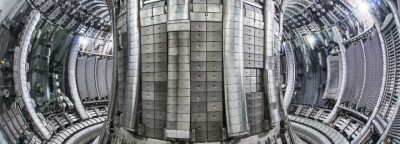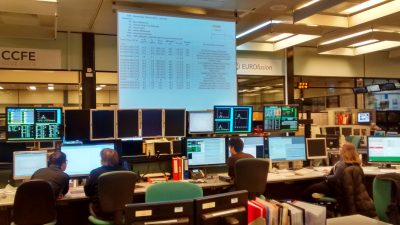
The Joint European Torus (JET) is going to take a well-earned shutdown after the 2015-16 experimental campaign which is believed to be one of the most successful campaigns of JET history.
According to the Head of the JET Exploitation Unit, Lorne Horton, “the campaign had three highlights: rehearsal of the procedures for future tritium-tritium and deuterium-tritium experiments, the hydrogen campaign during which physicists learned about the dependence of plasma parameters on the mass of the hydrogen fuel used, and the high-power deuterium campaign. And all these experiments achieved expected results.”
Our fusion group was involved in many of these experiments. The scope of these experiments is broad and here just a brief explanation on those where the BSC team contributed will be given.

Our group leader ICREA Prof. Mervi Mantsinen together with Dani Gallart worked on the Hybrid Scenario, of which Mervi was one of the four Scientific Coordinators. This scenario works at a high beta (plasma pressure/magnetic pressure) and profiles the plasma safety factor q in such a way that many instabilities and plasma modes are avoided or, at least, mitigated. Thus, this scenario is one of the best candidates to operate with the ITER DT plasma for long and stable discharges and, in fact, it broke the present DD fusion rate record with the JET ITER like wall which was achieved back in the 2014 campaign.
Mervi and Dani have also worked in other experiments like the three ion-species ICRF scheme which exploits a novel way to heat resonant minority ions, experiments on fast ion physics and those on the isotope effect on L-to-H confinement mode transition.
Dr. Shimpei Futatani contributed to the modelling of the pellet ELM triggering in JET plasma using JOREK code. The JOREK modelling shows the qualitative agreement with the experiment observation of the pellet triggered ELM.
The 2015-2016 campaigns has provided the fusion community with a plenty of new important data that needs to be further analysed and modelled in preparation for the next campaign. It is scheduled to start in January 2018.
All in all, the BSC fusion group, together with the fusion community, keeps working to make fusion energy a reality.
More details on JET and recent JET campaigns can be found here.
